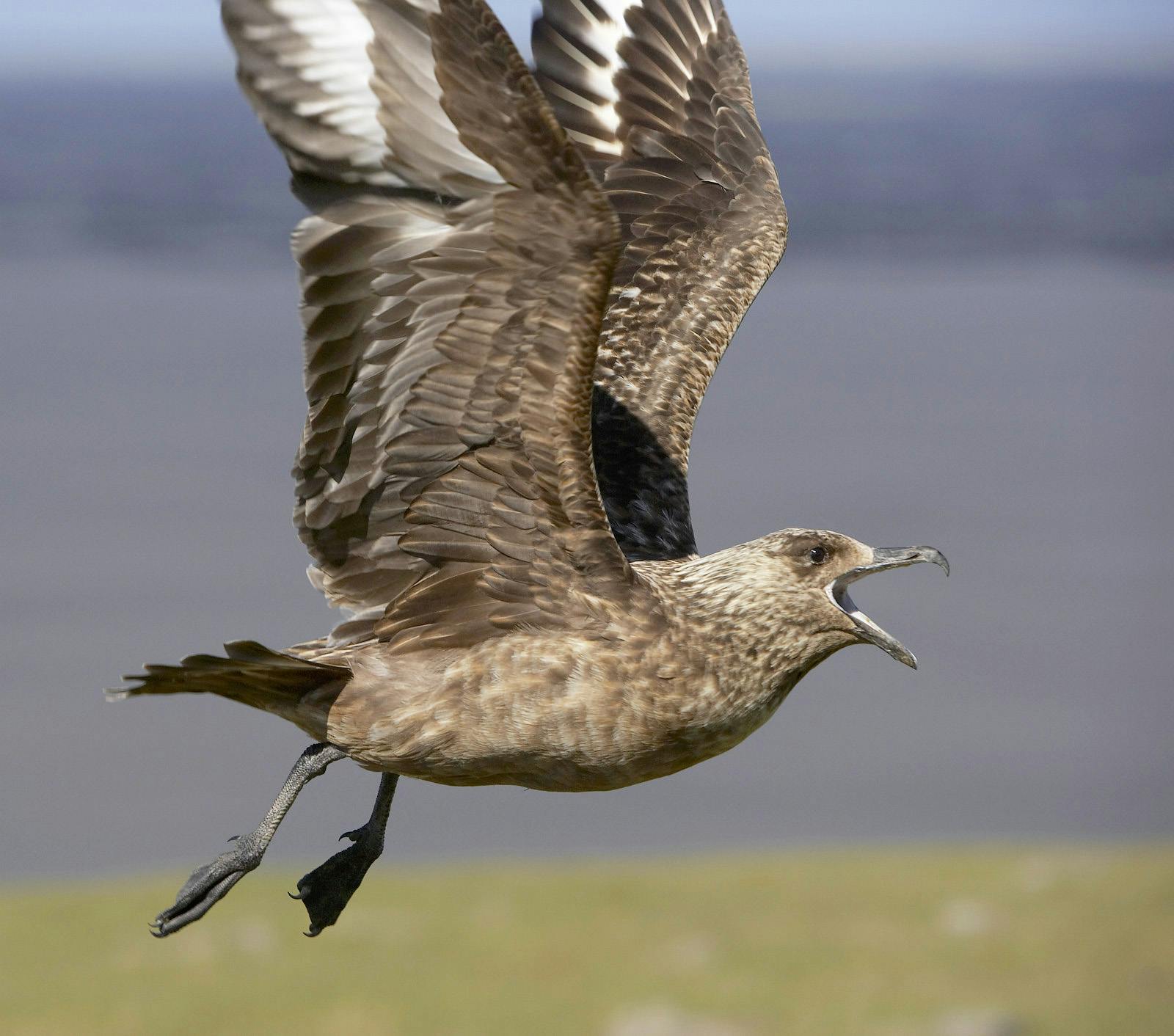
The Great Skua
The great skua (Catharacta skua, also known as Stercorarius skua) is a seabird belonging to the Charadriiformes order within the skua family (Stercorariidae). The great skua is an interesting bird resembling a large gull, stocky built with webbed feet, and a typical bird of prey. It has sharp claws and a hooked bill so it can kill and feed as a bird of prey.
The great skua is a dark bird, mostly brownish with a white wing strip, which is very noticeable during flight. The bill and feet are black and strong. Both sexes look alike, but the female is a little bit larger, which is another characteristic in common with birds of prey. The great skua weighs 1-1,6 kilograms (2.6-3.5 lbs) and is 53-61 cm (21-24 in) in length. The wingspan is 1.3-1.4 metres (4.3-4.6 ft), and its flight resembles a large gull with heavy wingstrokes and gliding in between.
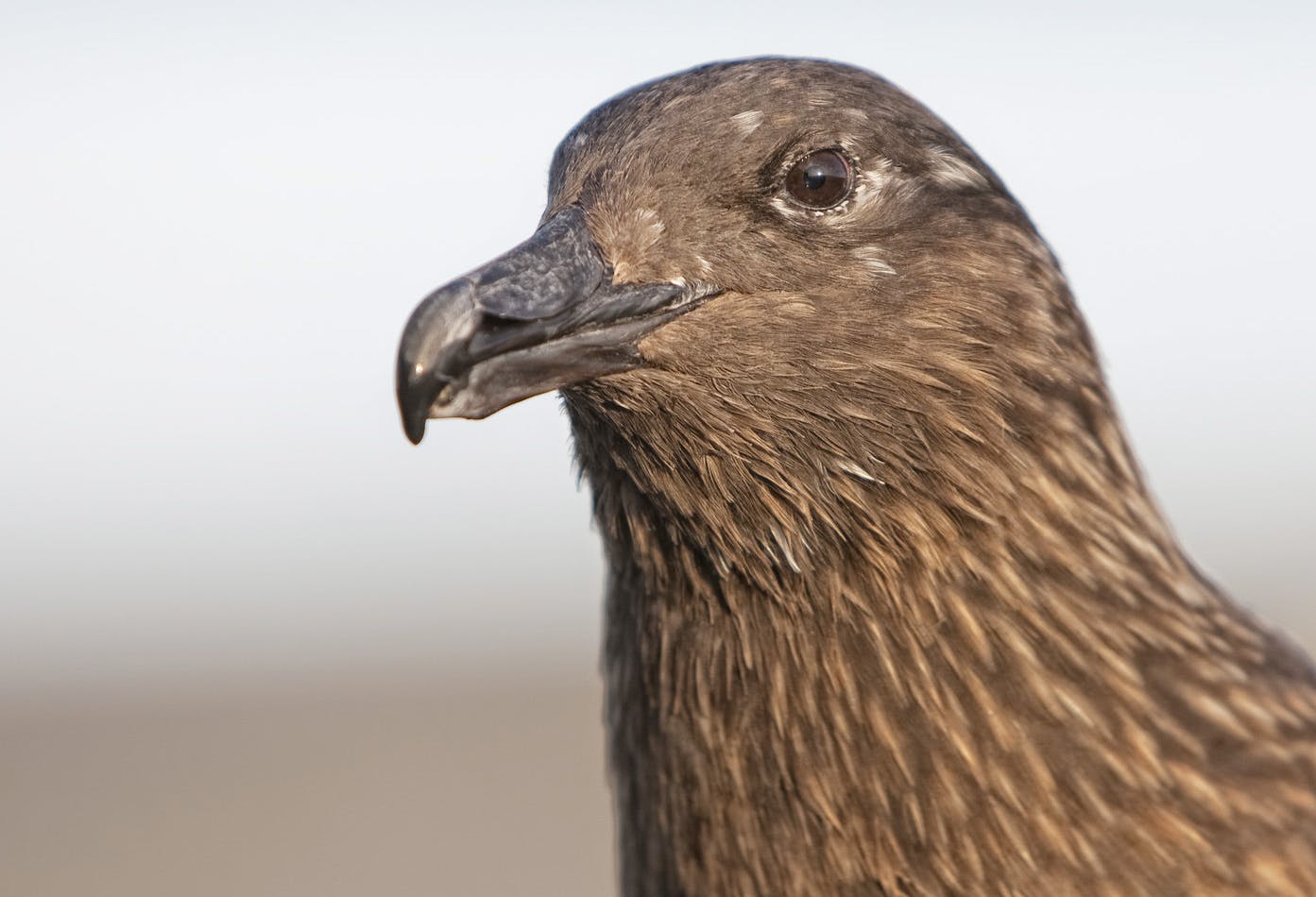
Bird of the Great Black Sands
The great skua is mostly found in South Iceland and is a characteristic of the extensive black sands of the South. The biggest colonies are found at Öræfi, but there are also colonies at Öxarfjörður in North-East Iceland and at Úthérað in the east. Population size is not fully known, but was estimated at 5.400 breeding pairs in 1985. Colonies are also found in Scotland, the Faroe Islands, Norway and all the way north to Svalbard. The population has decreased in recent years and is now considered to be in danger in Iceland.
Discover the magical mysteries of Icelandic nature and wildlife at the Perlan Museum in Reykjavík. Inside, explore a treasure trove of fun activities that let you dive deep into all the amazing things Iceland has to offer. This special experience is made for all ages, bringing Iceland's incredible beauty and nature together in one fantastic place at the Perlan Museum. Read more about the exhibitions at Perlan here.
The Big Bad Pirate
Like other seabirds, the great skua gets most of its food from the ocean. Sandeel (Ammodytes marinus), Chapelin (Mallotus villosus) and fish waste are the most important food items. The great skua is also a notorious hijacker as it harasses sterns (Sterna paradisaea), puffins (Fratercula arctica) and even gannets (Morus bassanus) to drop their catch. It hunts other birds to feed on, such as fulmars (Fulmarus glacialis) and greylag geese (Anser anser) and also steals eggs and young.
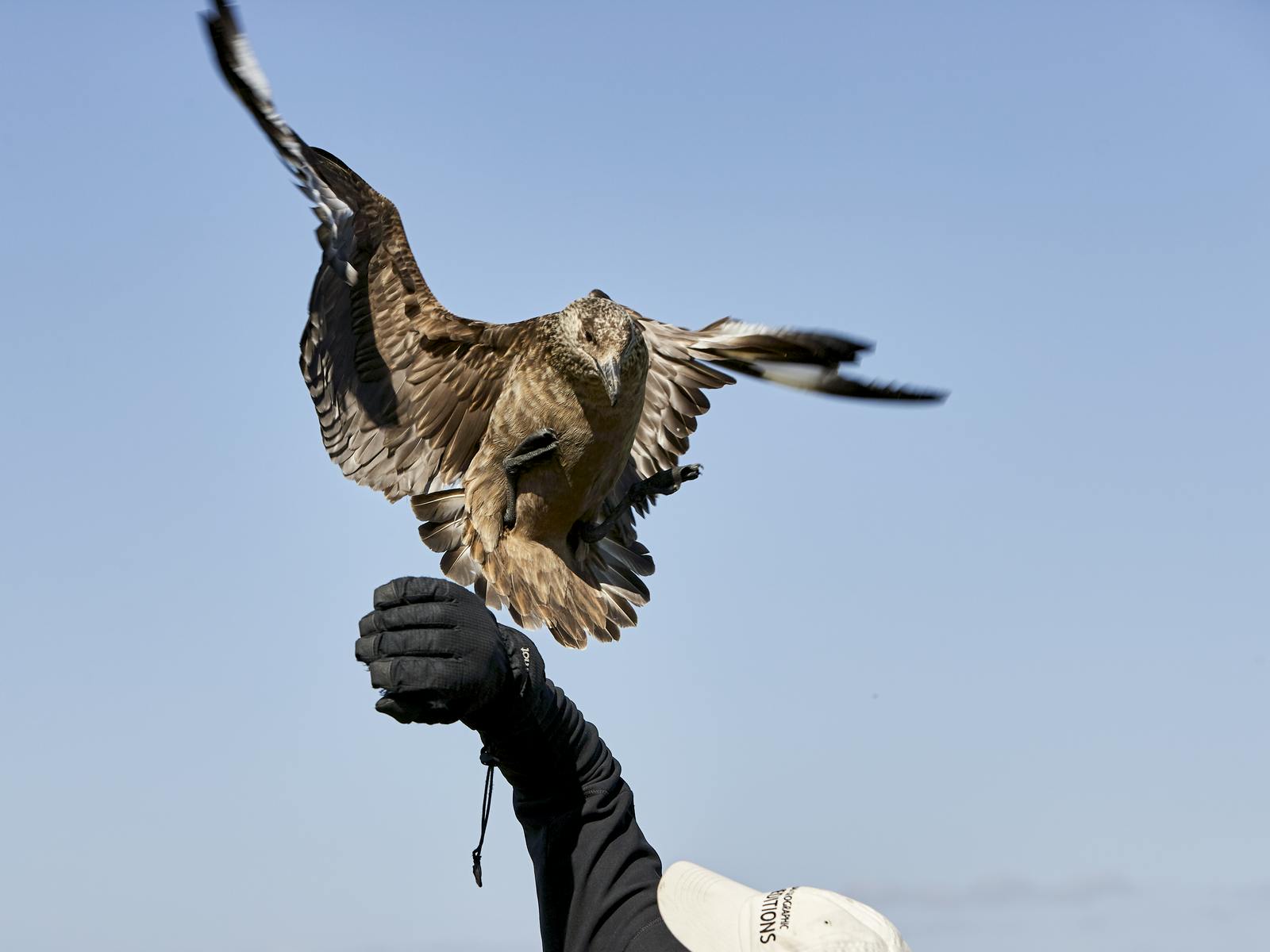
Behaviour and Nesting Ecology
The great skua is a migratory bird that arrives on shores in March, occupying a territory and waiting for its companion. The birds pair for a lifetime. The birds are social on the breeding grounds as they gather around streams and ponds in the neighbourhood to chat. But still, the colonies are sparse, and each pair defends its territory aggressively against intruders.
The great skua is known for its fierce attacks towards whoever goes near its nest. There are Icelandic legends where livestock and even humans have died because of head trauma due to its attack. The truthfulness of those stories can be questioned, but nevertheless, the skua can strike intruders with a dangerous blow.
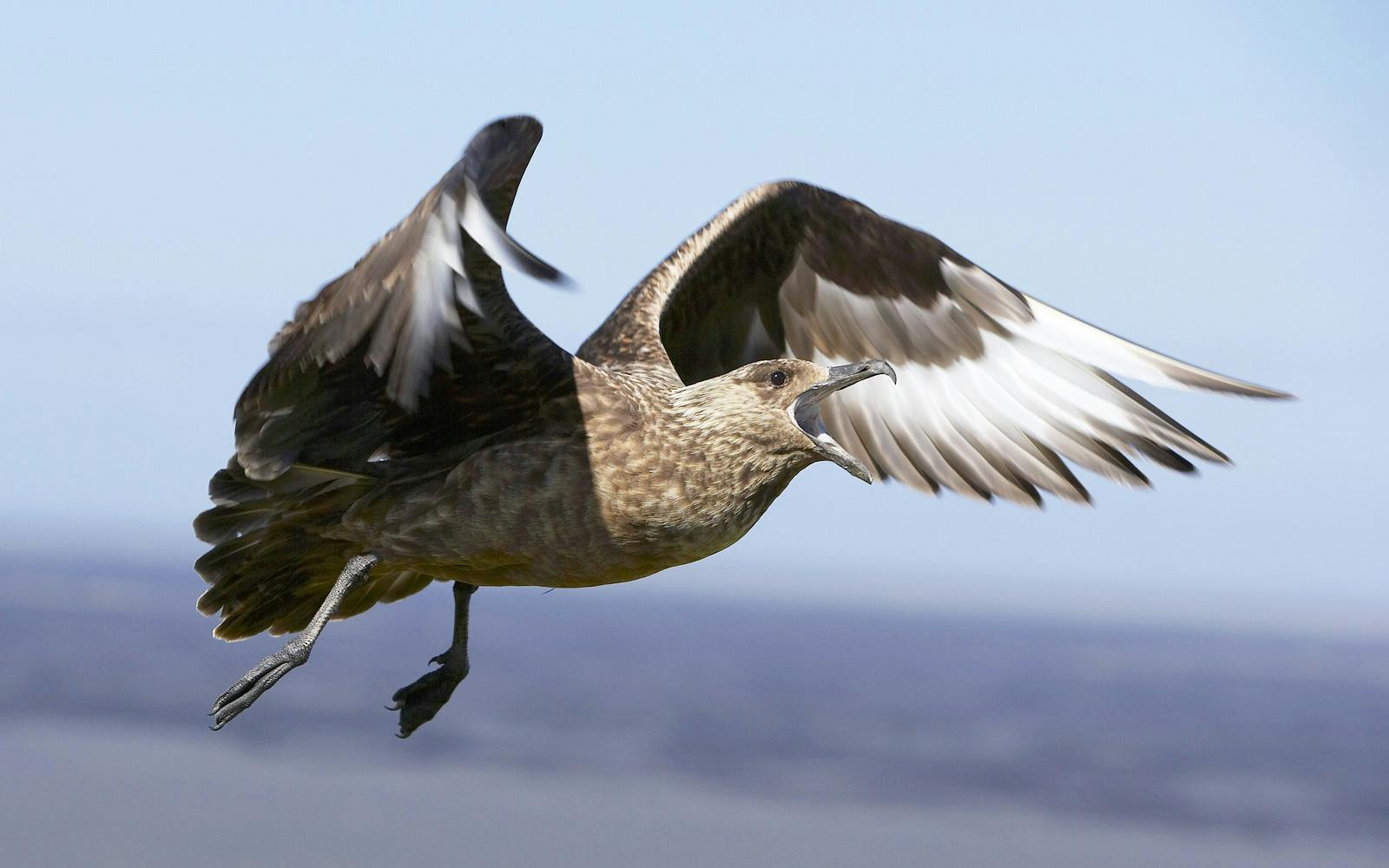
Nesting Habits
The nest is a small dent on the ground or in a grass stop, sometimes lined with hay but often non-isolated. The eggs are usually two, light brown or olive green, with dark spots. Each egg weighs about 90 grams (3.18 oz). The female incubates for 29 days while the male brings food to the nest. After fleeing, the young roam the territory well protected by the female, but the male brings them food.
When fall sets in, the great skua abandons its territory and heads out to sea. Juveniles roam the ocean for 4-9 years and go widely. Icelandic skuas have been observed in the East Atlantic from the Bay of Biscay south to West Africa and even in the West Mediterranean. They also head to East Greenland and North Svalbard.
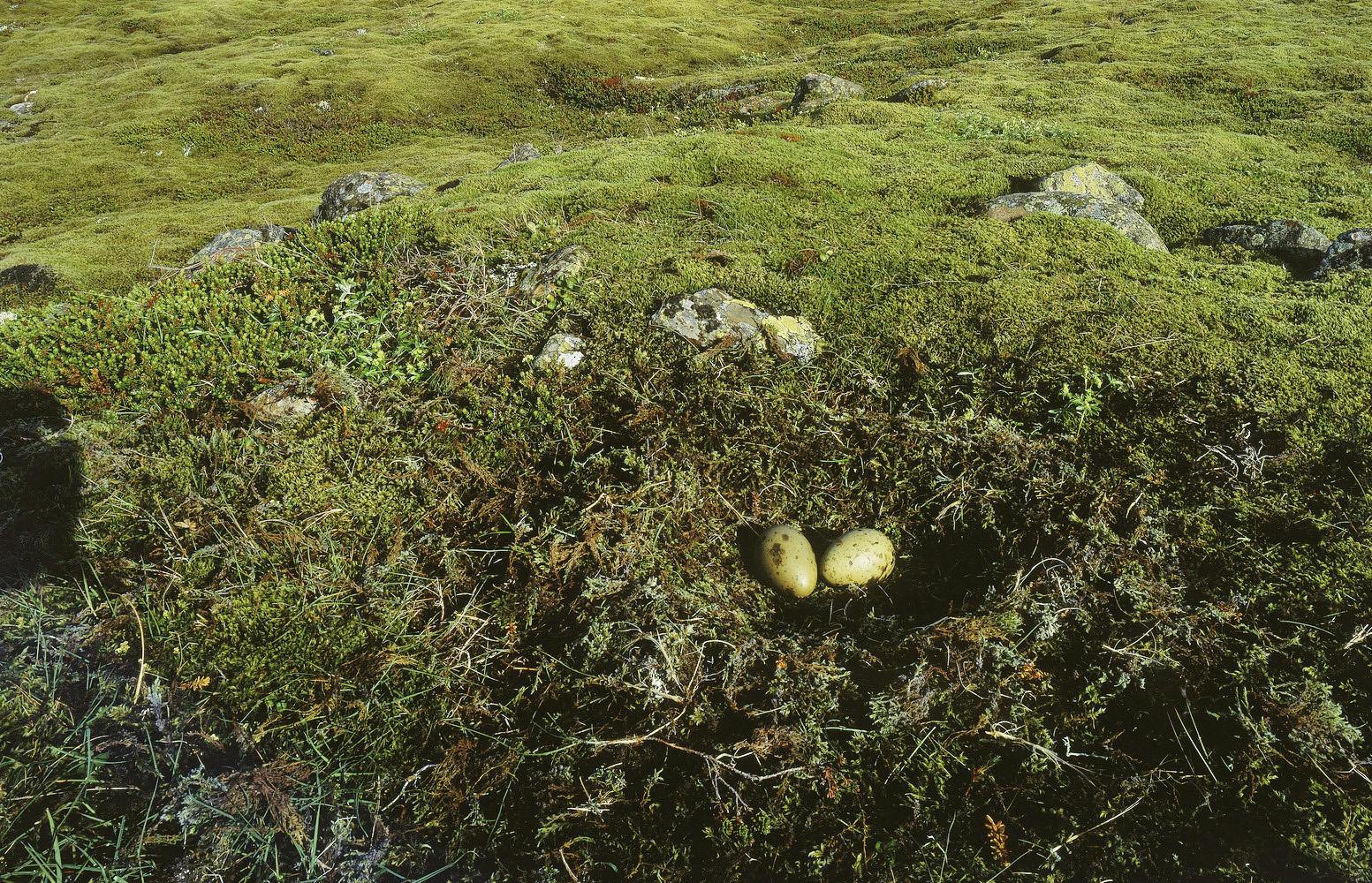
Origin of the Great Skua Name
The name skua has its origin in Faroese as „skúvur“ or „skúgvur“ and is the only international bird's name from the Faroe Islands. Skua means the dark or the shady one. The Icelandic word „skúmaskot“, which means a dark place, is derived from the dark-looking skua. Another Icelandic word connected to the skua is „kjaftaskúmur“, meaning a noisy person who babbles intensively. The skua often cries out loud laughter and babbling sounds. Most of us know one or two „kjaftaskúmur“.
Five Facts About the Great Skua
- Skúvur is a male´s name in Faroe islands.
- Other Icelandic names are „the ocean skua“ and „the shark skua“, as it lives most of the year on the ocean and can swallow very large food items, as sharks do.
- The great skua is an opportunist when it comes to feeding. It eats whatever the ocean brings it, is a scavenger, attacks birds and swallows eggs and young.
- Juveniles roam the sea for 4-9 years before settling and breeding.
- The great skua is a long-living bird that can live to 40 years old, but the average lifespan is 30 years.







